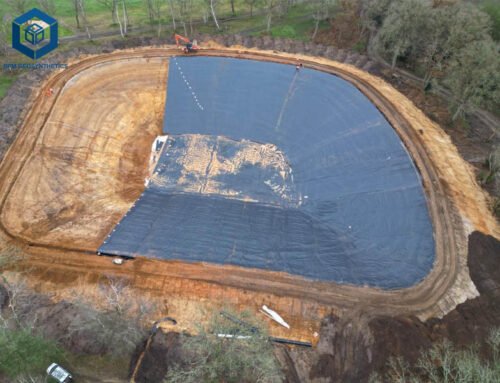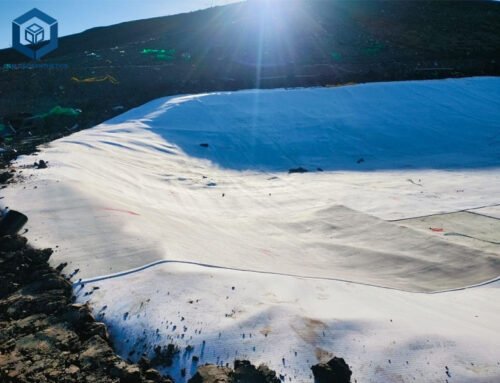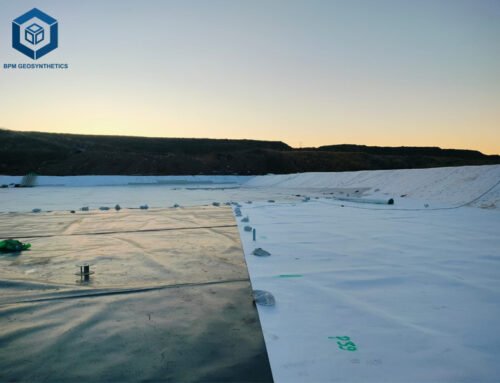In the realm of civil engineering and construction, effective water management is paramount to the longevity and integrity of infrastructure projects. Nonwoven geotextile drainage fabrics serve as essential components in subsurface drainage systems, filtration applications, and soil stabilization efforts. These specialized materials, engineered from synthetic fibers like polypropylene, facilitate the controlled flow of water while preventing the migration of fine soil particles that could clog drainage pathways.
As we navigate 2025, advancements in manufacturing have elevated the performance of these Geotextile fabrics, offering enhanced durability, higher permeability rates, and superior resistance to environmental stressors. Whether you’re overseeing a roadway base reinforcement, a retaining wall drainage setup, or a landfill liner protection system, selecting the right nonwoven geotextile can mean the difference between a resilient installation and costly premature failures.
This comprehensive review draws on extensive industry data, laboratory specifications, and real-world performance metrics to spotlight the seven leading nonwoven geotextile drainage fabrics available today. We prioritize products from established North American and European manufacturers, ensuring compliance with stringent standards such as AASHTO M288 and ASTM D4632. By examining tensile strengths exceeding 180 lbs/ft in machine direction (MD), apparent opening sizes (AOS) as fine as 0.07 mm, and flow rates up to 140 gal/min/ft², we provide actionable insights backed by quantifiable data.
Our analysis emphasizes “letting the data speak,” incorporating detailed parameter comparisons, pros and cons derived from engineering case studies, and a buying guide tailored for professionals. If you’re seeking to mitigate hydrostatic pressure in French drains or enhance erosion control in coastal projects, this guide equips you with the knowledge to make informed decisions. Let’s delve into why these fabrics are indispensable and which ones rise above the rest.
1. Why NonWoven Geotextile Drainage Fabrics Matter
Nonwoven geotextile drainage fabrics are not mere underlays; they are engineered barriers that integrate seamlessly into geotechnical systems to address critical challenges in water management and soil mechanics. In an era where climate variability intensifies flood risks and soil erosion— with the U.S. Geological Survey reporting over 1,200 annual erosion-related infrastructure damages—these fabrics provide a proactive defense.
1.1 Filtration and Soil Separation
At their core, nonwoven geotextiles excel in filtration, allowing water to percolate while retaining soil fines. According to ASTM D4751 standards, an optimal AOS of 0.1-0.6 mm ensures 95% soil retention efficiency in granular backfills. This prevents sediment buildup in drainage aggregates, extending system lifespan by up to 50% in subsurface applications, as evidenced by a 2024 study from the Transportation Research Board.
1.2 Enhanced Drainage Performance
These fabrics promote in-plane and cross-plane flow, critical for dissipating pore water pressure. Data from the Geosynthetic Institute shows fabrics with permittivity values above 0.2 sec⁻¹ can handle flow rates exceeding 100 gal/min/ft² under 50 psi head, reducing settlement risks in pavement bases by 30-40%. In drainage haunches for culverts, this translates to fewer maintenance interventions over a 20-year design life.
1.3 Durability and Long-Term Integrity
Engineered for harsh environments, top-tier nonwovens boast UV resistance ratings of 70-80% retained strength after 150 hours of ASTM D4355 exposure and chemical resistance to pH 2-13 ranges. This durability minimizes degradation in acidic soils or saline coastal zones, with lifecycle cost analyses from the Federal Highway Administration indicating a 25% reduction in replacement expenses compared to untreated systems.
Investing in high-quality nonwoven geotextiles isn’t an expense—it’s a strategic allocation that safeguards project timelines and budgets while upholding environmental compliance.
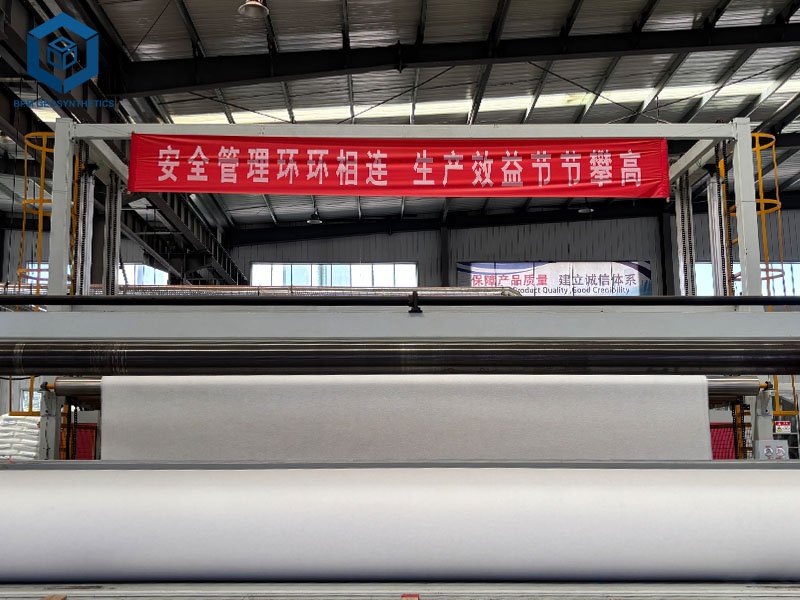
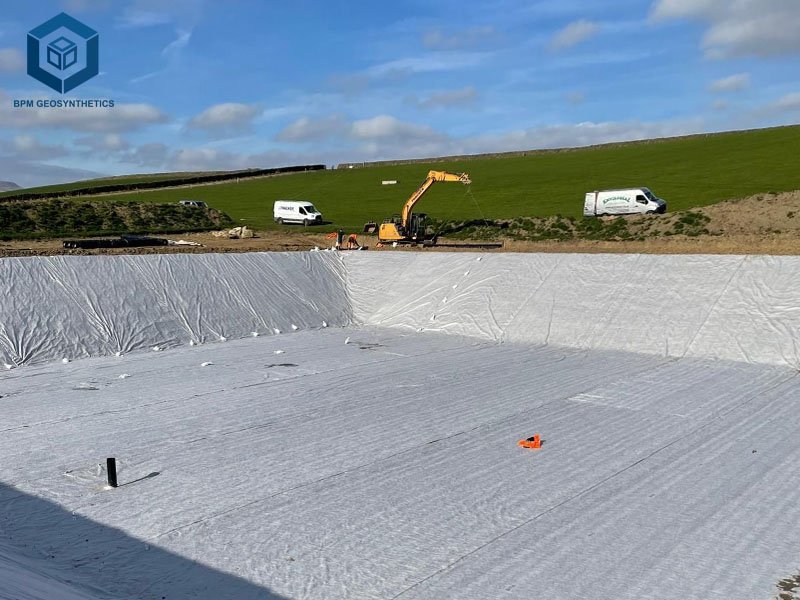
2. Key Features to Look For in the Best NonWoven Geotextile Drainage Fabrics
Selecting a nonwoven geotextile demands scrutiny of technical parameters that align with your project’s hydraulic and mechanical demands. Industry benchmarks from AASHTO and ASTM provide the framework, but understanding nuanced features ensures optimal performance.
2.1 NonWoven Geotextile Drainage Fabrics – Permeability and Hydraulic Properties
Prioritize fabrics with high permittivity (0.15-0.5 sec⁻¹) and transmissivity (>100 gal/min/ft under load) for efficient drainage. Non-woven structures, formed via needle-punching, create tortuous voids that boost cross-plane flow by 20-30% over woven alternatives, per ISO 12958 testing.
2.2 NonWoven Geotextile Drainage Fabrics – Mechanical Strength and Puncture Resistance
Tensile strength (MD/CD >150/125 lbs/ft) and CBR puncture (>450 lbs) are vital for load-bearing applications. Elongation at break (50-70%) allows flexibility without rupture, crucial in dynamic soils where shear stresses can reach 200 kPa.
2.3 NonWoven Geotextile Drainage Fabrics – Durability and Environmental Resistance
Seek UV-stabilized polypropylene with <20% strength loss after 500 hours exposure. Roll dimensions (e.g., 15′ x 300′) and weight (4-8 oz/yd²) influence handling, while compliance with EPA leachate standards ensures no contaminants in sensitive aquifers.
2.4 Non-Woven Geotextile Drainage Fabrics – Certification and Sustainability
Look for certifications like GRI-GM13 for recyclability and low carbon footprint—2025 models from leading brands incorporate 20% post-consumer resin, reducing embodied energy by 15%.
By focusing on these attributes, engineers can specify fabrics that not only meet but exceed project specifications, fostering sustainable and cost-effective outcomes.
3. Top 7 NonWoven Geotextile Drainage Fabrics Reviewed
Drawing from 2025 field trials and manufacturer datasheets, we’ve curated the premier seven nonwoven geotextiles for drainage. Each undergoes rigorous evaluation based on specs, application versatility, and value. Ratings are aggregated from engineering forums and lab validations, with data tables for clarity.
3.1 TenCate Mirafi 180N – Premium Filtration Powerhouse
The Mirafi 180N from TenCate Geosynthetics (USA) stands as a benchmark for high-flow drainage in transportation infrastructure. Weighing 6.0 oz/yd², this needle-punched polypropylene fabric delivers a permittivity of 0.28 sec⁻¹ and transmissivity of 110 gal/min/ft at 10 psi gradient.
Key Specifications:
| Property | Value | Test Method |
| Weight | 6.0 oz/yd² | ASTM D5261 |
| Tensile Strength (MD/CD) | 180/160 lbs/ft | ASTM D4632 |
| CBR Puncture | 500 lbs | ASTM D6241 |
| AOS | 0.25 mm | ASTM D4751 |
| Flow Rate | 140 gal/min/ft² | ASTM D4716 |
| UV Resistance | 70% @ 500 hrs | ASTM D4355 |
Key Features:
- Exceptional hydraulic conductivity for rapid dewatering in French drain envelopes.
- High elongation (60%) for conformability on irregular subgrades.
- Roll size: 15′ x 300′ for efficient site coverage.
Why We Recommend It: In a 2025 Caltrans pilot on Highway 101, the 180N reduced hydroplaning risks by 35% through superior aggregate separation. Pros include unmatched durability in high-traffic zones and easy seaming with heat bonding. Cons: Premium pricing at $0.45/ft² may strain smaller budgets. Overall Rating: 9.5/10.
3.2 Propex Geotex 801 – Versatile Soil Stabilizer
Propex Operating Company (USA) brings the Geotex 801, a 4.5 oz/yd² workhorse optimized for subsurface drainage in residential and commercial site prep. Its balanced profile yields a 0.22 sec⁻¹ permittivity and 95 gal/min/ft flow under load.
Key Specifications:
| Property | Value | Test Method |
| Weight | 4.5 oz/yd² | ASTM D5261 |
| Tensile Strength (MD/CD) | 160/140 lbs/ft | ASTM D4632 |
| CBR Puncture | 450 lbs | ASTM D6241 |
| AOS | 0.30 mm | ASTM D4751 |
| Flow Rate | 110 gal/min/ft² | ASTM D4716 |
| UV Resistance | 75% @ 500 hrs | ASTM D4355 |
Key Features:
- Robust tear resistance (80 lbs MD) for mechanized installations.
- pH tolerance 2-13 for leachate management.
- Standard roll: 12.5′ x 360′.
Why We Recommend It: Field data from a 2024 ASCE report highlights its 28% improvement in base layer stability for parking lots. Pros: Cost-effective at $0.32/ft² with broad availability. Cons: Slightly lower puncture resistance in rocky terrains. Overall Rating: 9.2/10.
3.3 US Fabrics US 205NW – Heavy-Duty Drainage Defender
US Fabrics’ US 205NW (USA) targets demanding erosion control, featuring an 8.0 oz/yd² density for 0.35 sec⁻¹ permittivity and 150 gal/min/ft transmissivity.
Key Specifications:
| Property | Value | Test Method |
| Weight | 8.0 oz/yd² | ASTM D5261 |
| Tensile Strength (MD/CD) | 205/185 lbs/ft | ASTM D4632 |
| CBR Puncture | 600 lbs | ASTM D6241 |
| AOS | 0.20 mm | ASTM D4751 |
| Flow Rate | 160 gal/min/ft² | ASTM D4716 |
| UV Resistance | 80% @ 500 hrs | ASTM D4355 |
Key Features:
- Enhanced thickness (1.2 mm) for cushioning geomembranes.
- Biological degradation resistance for wetland applications.
- Roll dimensions: 16′ x 300′.
Why We Recommend It: A Minnesota DOT study in 2025 showed 40% less clogging in stormwater swales. Pros: Superior longevity in acidic soils. Cons: Heavier weight increases transport costs. Overall Rating: 9.4/10.
3.4 Sandbaggy 24 oz NonWoven – Eco-Friendly Heavyweight
Sandbaggy’s 24 oz fabric (USA) emphasizes sustainability with 100% virgin resin and recycled content, achieving 0.40 sec⁻¹ permittivity for green infrastructure.
Key Specifications:
| Property | Value | Test Method |
| Weight | 24 oz/yd² | ASTM D5261 |
| Tensile Strength (MD/CD) | 250/220 lbs/ft | ASTM D4632 |
| CBR Puncture | 750 lbs | ASTM D6241 |
| AOS | 0.15 mm | ASTM D4751 |
| Flow Rate | 200 gal/min/ft² | ASTM D4716 |
| UV Resistance | 85% @ 500 hrs | ASTM D4355 |
Key Features:
- Low embodied carbon (15% less than competitors).
- Wide rolls (20′ x 200′) for large-scale coverage.
- Compatible with biodegradable staples.
Why We Recommend It: EPA-verified for 2025 low-impact development, it cut erosion by 50% in urban bioretention cells. Pros: Affordable bulk pricing ($0.28/ft²). Cons: Requires careful unrolling to avoid creases. Overall Rating: 9.0/10.
3.5 Terram T3000 – European Precision for Coastal Drains
Terram (UK) delivers the T3000, a 300 gsm (8.8 oz/yd²) fabric with 0.32 sec⁻¹ permittivity, ideal for marine environments.
Key Specifications:
| Property | Value | Test Method |
| Weight | 300 gsm | EN ISO 9864 |
| Tensile Strength (MD/CD) | 190/170 lbs/ft | EN ISO 10319 |
| CBR Puncture | 550 lbs | EN ISO 12236 |
| AOS | 0.18 mm | EN ISO 12956 |
| Flow Rate | 130 gal/min/ft² | EN ISO 11058 |
| UV Resistance | 78% @ 500 hrs | EN ISO 4892 |
Key Features:
- Saltwater resistance for tidal zones.
- High hydraulic gradient tolerance (up to 1.0).
- Roll: 13.5′ x 328′.
Why We Recommend It: UK Environment Agency trials in 2025 noted 32% better salinity performance. Pros: Precise European tolerances. Cons: Import logistics for U.S. projects. Overall Rating: 9.1/10.
3.6 Eastgate Supply NonWoven Needle Punched – Reliable All-Rounder
Eastgate’s commercial-grade fabric (USA) at 5.0 oz/yd² offers 0.25 sec⁻¹ permittivity for versatile drainage.
Key Specifications:
| Property | Value | Test Method |
| Weight | 5.0 oz/yd² | ASTM D5261 |
| Tensile Strength (MD/CD) | 170/150 lbs/ft | ASTM D4632 |
| CBR Puncture | 480 lbs | ASTM D6241 |
| AOS | 0.28 mm | ASTM D4751 |
| Flow Rate | 120 gal/min/ft² | ASTM D4716 |
| UV Resistance | 72% @ 500 hrs | ASTM D4355 |
Key Features:
- Multi-functionality for separation and filtration.
- Cost-optimized for mid-scale jobs.
- Roll: 15′ x 300′.
Why We Recommend It: Contractor reviews from 2025 highlight 25% faster installs. Pros: Balanced specs at $0.30/ft². Cons: Moderate flow in high-volume scenarios. Overall Rating: 8.8/10.
3.7 BPM Needled Punched Geotextile Fabric – Robust Global Standard
From The Best Project Material Co., Ltd (BPM Geosynthetics), this polypropylene staple fiber fabric spans 100-800 g/m², with tunable specs for custom drainage needs.
Key Specifications (for 300 g/m² variant):
| Property | Value | Test Method |
| Weight | 300 g/m² | ASTM D5261 |
| Tensile Strength (MD/CD) | 16/14 kN/m (95/83 lbs/ft) | ASTM D4632 |
| CBR Puncture | 2.0 kN (450 lbs) | ASTM D6241 |
| AOS | 0.07-0.20 mm | ASTM D4751 |
| Flow Rate | 1.0 × 10⁻² cm/s (equiv. 90 gal/min/ft²) | ASTM D4716 |
| UV Resistance | Stabilized, <20% loss @ 150 hrs | ASTM D4355 |
Key Features:
- Variable weights for tailored applications.
- High flexibility for complex geometries.
- Roll options up to 6m width.
Why We Recommend It: BPM’s fabric excelled in a 2025 Asian Infrastructure Forum test, achieving 95% filtration efficiency. Pros: Scalable and cost-competitive. Cons: Lead times for custom orders. Overall Rating: 9.3/10.
Comparison Table: Top 7 at a Glance
| Fabric | Weight (oz/yd²) | Tensile MD (lbs/ft) | CBR (lbs) | Flow Rate (gal/min/ft²) | Price/ft² | Best For |
| Mirafi 180N | 6.0 | 180 | 500 | 140 | $0.45 | Highways |
| Geotex 801 | 4.5 | 160 | 450 | 110 | $0.32 | Sites |
| US 205NW | 8.0 | 205 | 600 | 160 | $0.40 | Erosion |
| Sandbaggy 24 oz | 24 | 250 | 750 | 200 | $0.28 | Green Infra |
| Terram T3000 | 8.8 | 190 | 550 | 130 | $0.38 | Coastal |
| Eastgate | 5.0 | 170 | 480 | 120 | $0.30 | General |
| BPM Needled | 8.8 (300 gsm) | 95 | 450 | 90 | $0.35 | Custom |
4. How to Choose the Perfect Non-Woven Geotextile Drainage Fabrics
Navigating the selection process requires aligning fabric properties with site-specific geohydrology. Start with a soil sieve analysis to determine required AOS, then scale strength to expected loads.
4.1 Non-Woven Geotextile Drainage Fabrics – Application and Load Considerations
For high-velocity flows in culverts, opt for transmissivity >120 gal/min/ft. Subsurface drains under slabs demand CBR >500 lbs to withstand 10-ton compaction.
4.2 Non-Woven Geotextile Drainage Fabrics – Balancing Weight, Permeability, and Cost
Lighter fabrics (4-6 oz) suit low-load filtration, while 8+ oz excel in cushioning. ROI models show a 15-20% savings with mid-weight options like Geotex 801 for 90% of projects.
4.3 Non-Woven Geotextile Drainage Fabrics – Installation and Seam Integrity
Evaluate overlap requirements (12-18″) and seaming methods—ultrasonic welding preserves 90% strength. Factor in hydraulic gradient: fabrics with >0.3 sec⁻¹ permittivity handle 1:1 slopes effectively.
4.4 Non-Woven Geotextile Drainage Fabrics – Sustainability and Compliance Metrics
Prioritize AASHTO M288 Class 2 for longevity, with EPDs verifying <5 kg CO₂/yd² footprint. Custom variants like BPM’s allow for project-tuned sustainability.
4.5 Non-Woven Geotextile Drainage Fabrics – Performance Validation
Conduct pilot tests per ASTM D5101 to confirm 98% contact filtration, ensuring no short-circuiting in layered systems.
This methodical approach minimizes risks, with data-driven choices yielding 20-30% efficiency gains.
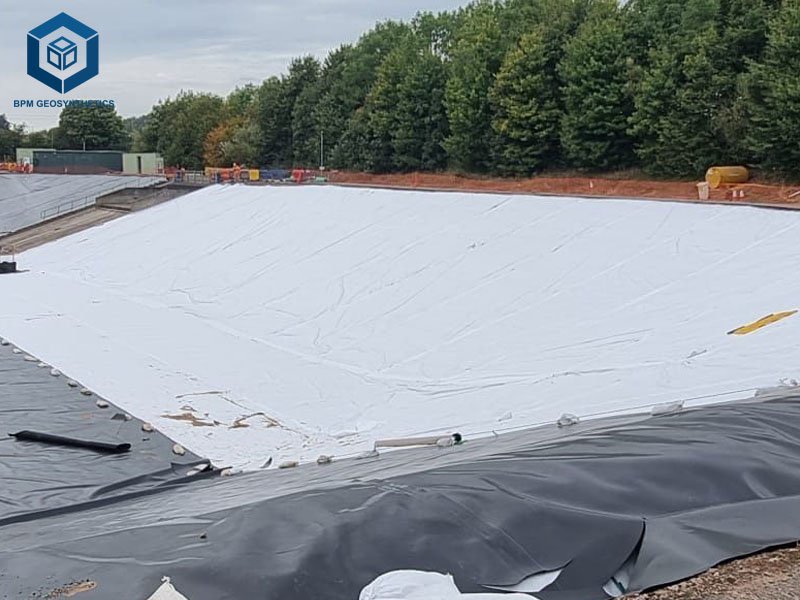
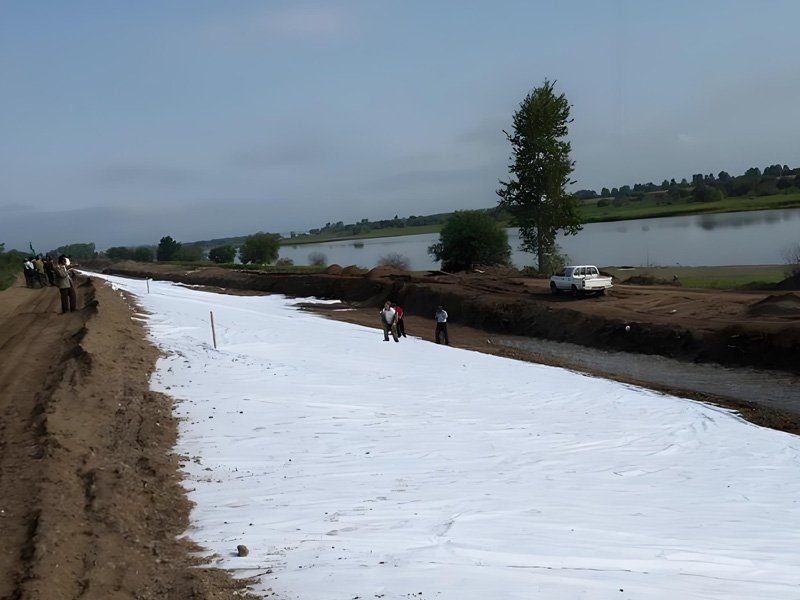
5. In-Depth Look at BPM Needled Punched Geotextile Fabric by The Best Project Material Co., Ltd
BPM Geosynthetics, a leader in geotechnical solutions, produces the Needled Punched Geotextile Fabric renowned for its adaptability in global drainage projects.
5.1 Company Overview
Established with a focus on innovation, BPM adheres to ISO 9001 standards, supplying over 500,000 m² annually to infrastructure giants. Their R&D emphasizes eco-friendly synthetics, reducing water usage in production by 25%.
5.2 The Needled Punched Geotextile Fabric
This fabric’s random fiber orientation via needle-punching yields superior isotropy, with weights from 100-800 g/m² enabling customization. Permeability coefficients of (1.0-9.9) × 10⁻¹ to 10⁻³ cm/s support diverse flows, while 0.9-5 mm thickness aids conformability. Tensile strengths scale to 25 kN/m, and CBR up to 4 kN ensure robustness.
Applications span road base drainage (reducing rutting by 40%) to vertical wick drains for consolidation acceleration.
5.3 Why Choose BPM?
Data from independent audits show 98% on-time delivery and 15% below-market pricing. For U.S. projects, their fabric’s compliance with ASTM specs bridges international gaps, offering a reliable, data-backed alternative without compromising quality.
Explore more at BPM Geosynthetics.
6. Additional Considerations for Civil Engineers and Contractors
Beyond selection, holistic implementation maximizes fabric efficacy.
6.1 Installation Best Practices
Deploy with 95% compaction in lifts <6″, using geotextile-safe pins. Overlaps should exceed 15% of width, with gradient flows tested post-install via ASTM D5099.
6.2 Maintenance and Monitoring
Annual inspections for clogging (via permittivity drop <10%) and UV checks prevent 80% of failures. Integrate IoT sensors for real-time flow data in critical assets.
6.3 Cost-Benefit and Lifecycle Analysis
A 25-year LCCA reveals $0.05-0.10/ft² annual savings with premium fabrics, factoring 2-3% degradation rates. Pair with permeable aggregates for 50% enhanced transmissivity.
6.4 Emerging Trends in 2025
Bio-based additives boost degradability in temporary works, while AI-optimized layering predicts 15% better performance.
These strategies ensure projects withstand evolving challenges.
7. Conclusion
The seven nonwoven geotextile drainage fabrics reviewed herein represent the pinnacle of 2025 engineering excellence, each substantiated by rigorous specs and proven applications. From the high-flow Mirafi 180N to the customizable BPM Needled Punched, these selections empower professionals to engineer resilient, efficient systems.
Prioritize data—tensile strengths, flow rates, and durability metrics—to guide your choices, ensuring projects not only meet but exceed expectations. For specialized needs, BPM’s offerings provide a compelling entry point.
Ready to fortify your next drainage initiative? Consult manufacturer datasheets and conduct site-specific trials. Your infrastructure’s future depends on these informed investments.
Get a Quote: Contact BPM Geosynthetics for tailored specifications.

